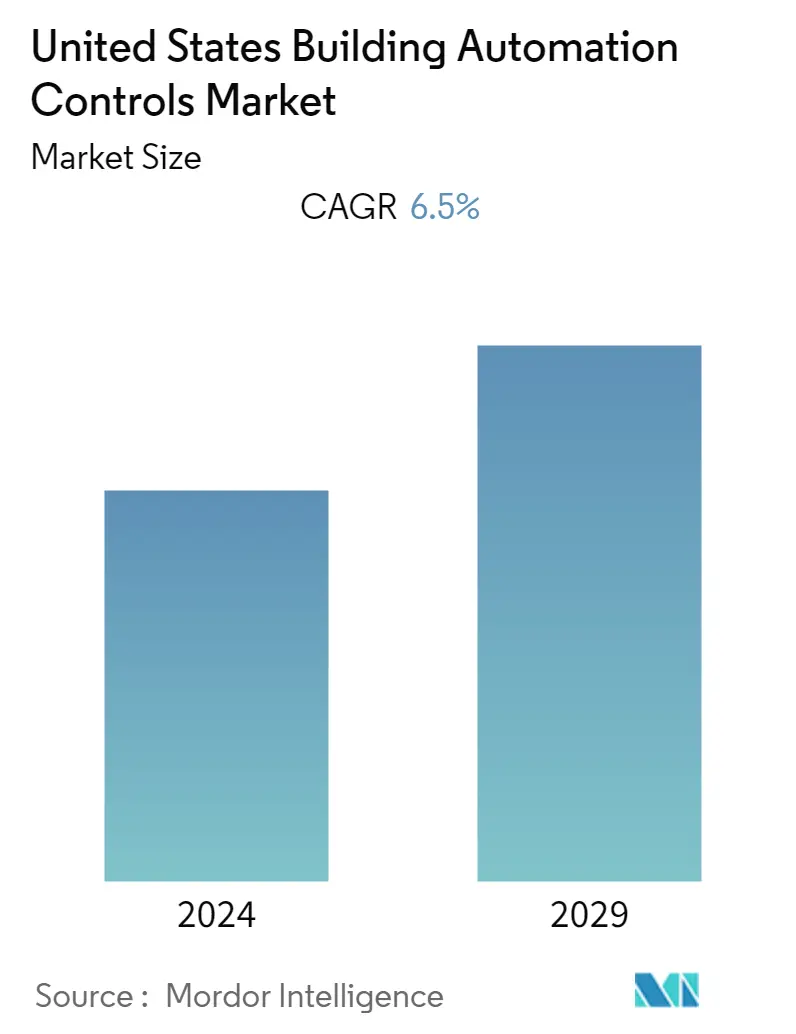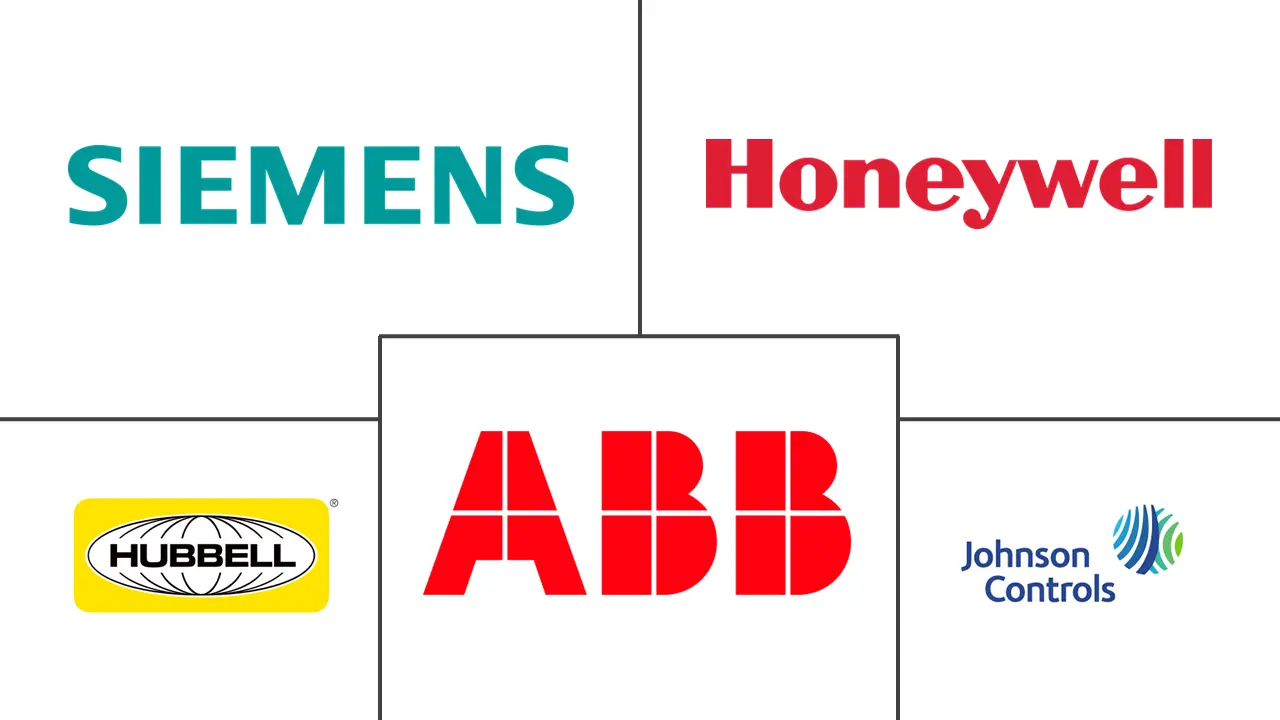Market Size of United States Building Automation Controls Industry

| Study Period | 2019 - 2029 |
| Base Year For Estimation | 2023 |
| Forecast Data Period | 2024 - 2029 |
| Historical Data Period | 2019 - 2022 |
| CAGR | 6.50 % |
| Market Concentration | Medium |
Major Players
*Disclaimer: Major Players sorted in no particular order |
Need a report that reflects how COVID-19 has impacted this market and its growth?
US Building Automation Controls Market Analysis
The united states building automation control systems market are expected to register a CAGR of 6.5 % over the forecast period (2022 - 2027). Building automation systems use information flow to a monitoring point to connect and integrate various facility technologies, such as HVAC, security, surveillance, and lighting. Building automation systems are increasingly being adopted in the business sector due to the need for energy management and the increasing focus on reducing utility costs. The majority of commercial structures in the US have these solutions.
- According to the New York State Energy Research and Development Authority, enabling real-time energy management systems and smart technologies could reduce costs by an average of 15% and increase the bottom line by creating an environment that encourages employee productivity and reduces energy waste, according to the New York State Energy Research and Development Authority (NYSERDA).
- Building managers and security experts are becoming more aware of the risk of smart building security as buildings become more integrated with IT and networking technology. Institutions in the financial services sector and other sectors should place a priority on smart building security since they are potentially lucrative targets for hackers. Because of these changes, the need for intelligent security system solutions will increase.
- Moreover, smart building IoT is gaining popularity in the commercial spaces as it provides user-friendly automation and application of intelligence for tasks, such as timer-controlled heating to an entire building by automatically regulating HVAC systems. IoT facility management service provides efficient physical security for a smart building by using cameras, movement detectors, and digital identification factors, such as biometrics identification systems.
- According to US facility managers, there is also a strong interest in upgrades and innovative building environments. Yet respondent input shows a major gap in the technologies currently deployed in the buildings. More than half of those surveyed says that the buildings they manage do not have proper air quality solutions (57%), integrated lighting that improves occupant productivity (66%), contactless building entry (67%), or an app that provides real-time information on building health (73%). Such a factor is expected to encourage the adoption of automation solutions post-pandemic.
- Despite the benefits that smart buildings offer, the building automation systems industry has always faced a tremendous challenge due to the way manufacturers deploy and install their systems. Significant building control systems are closed protocols that do not allow third-party systems to be installed in the ecosystems. Commercial building owners are challenged when it comes to choosing a sole manufacturer to be tied down to, as this lack of flexibility in installed systems could lead to high routine maintenance costs and delayed service.
